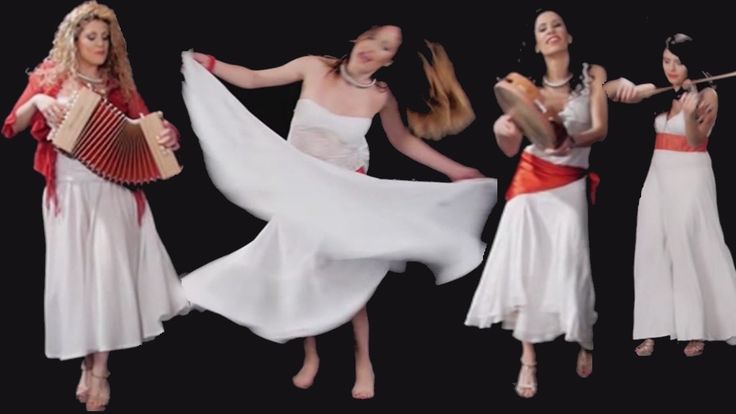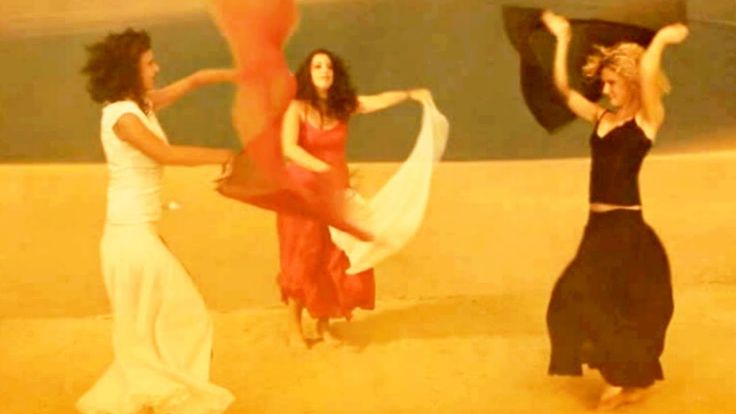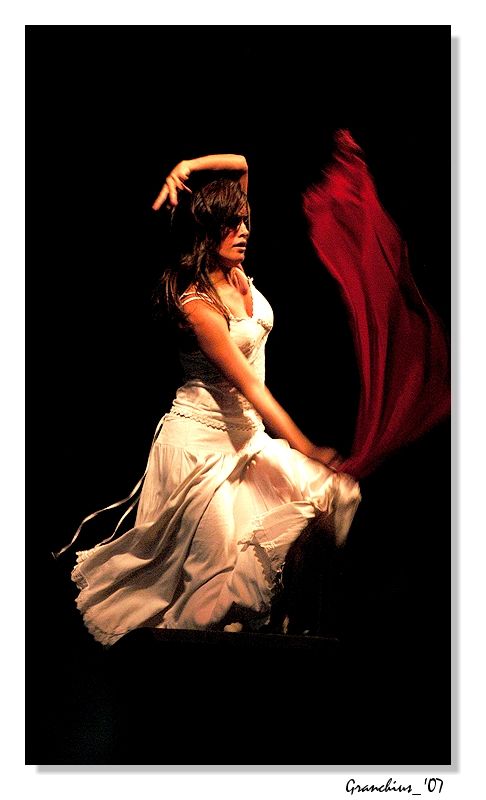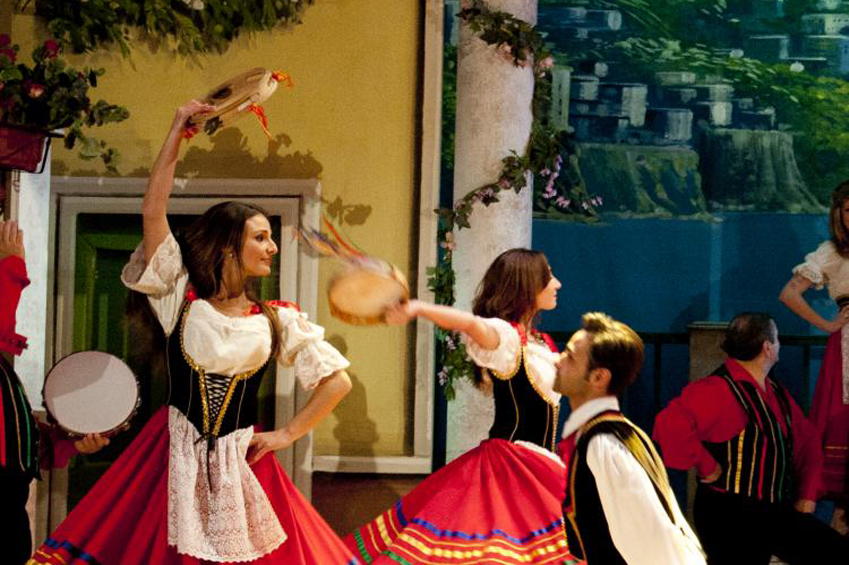How to dance the pizzica
The Pizzica, an Italian popular dance
The Pizzica is an Italian popular dance characteristic of the territory of Puglia between Taranto and Salento Leccese. Until the beginning of 20th century, however, this dance was widespread throughout Puglia, with different names. In general, it is part of the large traditional family of the “Tarantelle”.
The word “Pizzica” appears for the first time in a source written in 1797, referring to an evening dance organized by the nobility of Taranto in honor of King Ferdinand IV of Borbone, who was on a visit to the city. In the 19th century the Pizzica was firmly linked to therapeutic practices – made of dance and music, precisely – specific to the “Tarantismo”, following a tradition born in the fourteenth century. The tarantismo refers to the phenomenon of “tarantolati”, people whose illness according to tradition was linked to the “bite” of a tarantula, -the lycosa tarantula- or of a scorpion: the Pizzica and its music was used as a medicine able to heal the effect of the poison.
Over time, this dance was accompanied by an instrument such as the Zampogna until the first decades of the 19th century when but violin and mandolin, tambourine and accordion were introduced.
The Pizzica, therefore, has always represented the dance par excellence of celebrative moments of the communities, constituting the accompanying of rituals linked to tarantismo. In such a case, the Pizzica was performed by little orchestras whose main instruments were the tambourine and the violin, which, with their frenetic sound – usually at a more accelerated rate – had the task of “exorcising” the taranted women, healing them through the dance.
Even today, the Pizzica, now completely unrelated to the phenomenon of tarantismo which has disappeared, is at the center of important studies, linking it to classical Greek antiquity, to the myth of Arakne and to the Dionysian cults.
The danceThe Pizzica is danced as a couple, but it is not a “courting” dance. It was danced in fact not only by a man and a woman, it was widespread and practiced even between relatives and friends, and could also become a form of challenge if danced by two men. This last version was particularly alive in the city of Ostuni (in the province of Brindisi), where the Pizzica among men became an occasion of mockery.
It was danced in fact not only by a man and a woman, it was widespread and practiced even between relatives and friends, and could also become a form of challenge if danced by two men. This last version was particularly alive in the city of Ostuni (in the province of Brindisi), where the Pizzica among men became an occasion of mockery.
The traditional pizzica forms vary according to the area where it is practiced, and are different from the “Neo-Pizzica”, quite fashionable back in the 80s, which represents a reinvented form of the old dance. The traditional pizzica is part of the large family of the southern Tarantellas, with a wealth of ritualized postures, figurations and mimics of the peasant world. The Neo-Pizzica, instead, uses part of that language, reinterpreting it and making it more flexible and related to the emotions of the dancers. The “Pizzica fencing”, then, was a particular version that simulated a knife duel.
The phenomenon of Tarantismo is, by now, only a cultural memory left in the tradition of Puglia. In Salento, however, great attention is still given to the pizzica, with a phenomenon that in recent years has seen an intended revival of this ancient dance, accompanied also by a renewed attention to anthropological and folkloric studies of this reality. So much so to give life to the festa of the Taranta, held in Melpignano.
In Salento, however, great attention is still given to the pizzica, with a phenomenon that in recent years has seen an intended revival of this ancient dance, accompanied also by a renewed attention to anthropological and folkloric studies of this reality. So much so to give life to the festa of the Taranta, held in Melpignano.
It is an event that attracts thousands of music and Italian popular dance lovers, and that for years has also involved musicians of international appeal.
|
TARANTAndo & PIZZICAndo The "pizzica tarantata" is the music that marked the ancient healing ritual against the bite of tarantula, the dangerous poisonous spider. According to tradition in order to drive out the demon thought to have taken possession of the victim, generally a woman, tambourines should be beaten incessantly. The dizzily rhythmic sound of the tambourine combined with a frenzied hypnotic dance healed of the poison.
The Taranta dance: (Spider dance) usually consisted of three phases: first the woman crawled and clapped her hands and feet following the tambourines' rhythm, then she have herself up and while jumping and dancing she drawned wide figures in the air with a coloured foulard she had in her hands; at last she began to reel till she collapsed.
Pizzicarella dance - The Pizzica do' Core (pinch from the heart) or courtship dance expresses the feelings of love, eroticism and passion in the courtship between a man and a woman: a woman dancing to the frenzied rhythm of tambourines and violins, waving a red scarf, the color of passion, and doing so inviting the man she likes the most to dance with her. Tired of this new dancing partner, she invites another and yet another at her will. A the end of the dance she will give the red scarf to the man who steals her heart. Now days behind the taranta's possession it sees the effect of a very strong will of redemption and deliverance and, possibly, even of an exhibition of the subordinate role of the women.
The dancing steps follow a ritual. The pair formed under the command of the master start dancing for the possession of the circle. The purpose is to push the opponent to the center of the circle.The movements of the upper and lower body, ideally divided into two at the waist, the legs frantically increase speed, while the trunk is mostly static, just swaying.
pointed upwards in defiance. Other times dancers try to impress and confuse the partner with a "soprapasso" (overstep), a difficult dance step made crossing feet and hitting the ground with one foot outside the other alternately. When one of the contenders wins the rim, he begins the "passo 'ill'adornu", that is an imitation of a falcon's flight over its prey: the dancer follows a spiraling route driving the opponent toward the center. If the latter is defeated he goes to the center, slowing the pace of steps and lowering the arms, and is replaced. ...But sometimes he is not yet ready to surrender and tries to stop the adversary with a "tagghiapassu" (cutting the way-cut him out). |
Officina Zoe was formed in the early 1990s by Lamberto Probo, Donatello Pisanello and Cinzia Marzo helping fueling the revival of the Pizzica-Pizzica.
Today Officina Zoe is one of the most popular expression of the Pizzica and Taranta also thanks to the film director Edoardo Winspeare's successful movies "Sangue Vivo"(Fresh blood) and "Il Miracolo"(The miracle ") featuring Probo as an actor as well as Pisanello and Marzo as soundtracks writers. Their soundtrack won them the prestigious award of Grolla d'Oro at the Saint Vincent Festival as well as the nomination at Nastro Argento.
Below: Another Italian folk group is the Gipsy Acquaragia Drom from Rome, known for its driving rhythms, passionate melodies and entertaining performances.
Below: Ghetonia (Griko: Γειτονία, neighborhood) is a cultural group based in Calimera, Grecìa Salentina (Puglia). It is dedicated in preserving the music, poetry, language and folklore of the Griko-speaking people of Salento.
Below : Daniele Sepe (born April 17, 1960 in Naples) is known internationally for interpreting protest songs from around the world. |
The process of social and cultural development in the Salento have eliminated the phenomenon of tarantismo, which has recently come back into fashion in a new form and with a new spirit, to the point that some scholars are now talking of "neo-tarantismo". In Melpignano, a small town in the province of Lecce, every year since 1998, in a night of August, a musical event known as La Notte della Taranta, has been held. The event takes place in a large open space in front of the evocative architectural complex of the Church del Carmine and the Convento degli Agostiniani monastery, which dates back to the 16th century and forms the backdrop to the event. The festival is associated with the concept of neo-tarantismo, which is also linked to a desire to get away from the boring and stultifying rhythms of everyday life in the modern world (how ironic). The musical event was born from a desire to innovate and contaminate the traditional music of the Salento, experimenting with new sounds and the traditional music of other popular cultures. The Pizzica is the sort of music you can feel in the very dirt of the place. La Notte della Taranta festival is drawing hundreds of thousand to the town of Melpignano, in the province of Lecce or Grecia Salentina, a meeting between order and disorder, chaos and rigidity, in an emotional vortex that travels on the rails of minimalism and repetition. The festival starts in July with sporadic concerts thought the province and nearby ones in which perform the major bands of Salentine traditional panorama.
The event is now being 'exported' to other regions with Calabria taking the lead.
|
The most famous types of pizza in Russia
It's hard to choose your favorite pizza at Momento if you don't try them all. Many flavors and toppings with unusual combinations of ingredients will surprise even the simplest pizza. We add zest to each dish, highlighting the main ingredients in contrast. We prepare pizza on any dough with a diameter of 30 and 40 centimeters.
We prepare pizza on any dough with a diameter of 30 and 40 centimeters.
Which pizza to choose
We have so many pizzas with special toppings that you can try them endlessly, starting over every time. You won't be able to enjoy the taste once and for all, so we suggest you "look" to us more often. To do this, the site presents promotions for pizza and a nice price for your favorite types.
1. Jalapeño Pepperoni Spicy Pizza is a Mexican fun made from sausage slices that cover the base, impregnating it with garlic-smoked flavor. Causes a strong appetite and the mood for a tight snack. Jalapeno adds a spark and warms from the inside, even if the pizza is a little cold. Spicy pepper with special tomato sauce - a gradient of taste from sweet-spicy to very spicy!
2. "Meat" for those who need everything from pizza. There is chicken, ham, servelat under soft melting mozzarella cheese. Pickled cucumbers with the aroma of herbs and garlic are perfectly combined with smoked meat filling. And even if that's not enough, Supermeat will definitely not disappoint - more chicken, more vegetables and mushrooms!
And even if that's not enough, Supermeat will definitely not disappoint - more chicken, more vegetables and mushrooms!
3. “Derevenskaya”, as a variant of homemade pizza made from products that everyone loves and appreciates. Everything you need for lovers of the classics: stewed tomatoes, juicy and nutritious champignons, ham, chicken and a lot of cheese. There is oregano as a seasoning and, of course, garlic flavor mixed with a tomato sauce with sweet notes of ripe red vegetables.
4. "Cheese" pizza - a sea of creamy curd filling made from high-quality dairy products. Mozzarella and suluguni are woven together to create the most delicate viscosity in each piece of pizza. A good way to get an energy boost with healthy fats and proteins after a workout or hard work hours.
5. Refined, tomato and fragrant Margarita is too sweet and juicy to forget its taste. Despite the lack of meat, chicken or sausages, it is still good! It's all about well-selected tomatoes that have had time to ripen, but not overripe - moderately dense, soft and seasoned with a sauce from their own pulp. The final touch is basil sprinkled on top of hot cheese, giving off aroma when you try to open the box of a wonderful dish.
The final touch is basil sprinkled on top of hot cheese, giving off aroma when you try to open the box of a wonderful dish.
6. Exotic in our menu - Hawaiian pizza. Tasting this one of a kind pizza, you can feel a surge of energy and strength that makes you want to dance passionately and hotly, accompanied by a hot Hawaiian tango. It was in this dance that smoked chicken with pineapple and young buffalo cheese was intertwined - Mozzarella. The bright, playful taste of smoked-sweet and spicy taste will please and be remembered, even if you used to be opponents of pineapple on pizza.
7. "Assorti" is one of the leading positions when ordering pizza for large companies. Solves problems in the bud, as soon as a dispute starts in the office or a group of friends - what filling to choose. The variety of four tastes is able to satisfy the gastronomic needs of everyone at the table. As part of the universal pizza, servelat, ham, mushrooms and chicken, divided into 4 parts, 2 pieces each.
8. "Sea" tastes better on a thin crust, because it has collected all the important ingredients for seafood lovers, combined with herbs that make the dish more beautiful. Creamy salmon and crispy shrimp with curd cheese on a thin base allow you to enjoy the magic of taste without interrupting it, but complementing it with a thin flatbread smeared with tomato-garlic sauce.
You are interested in
Jalapeno Pepperoni Pizza
Mozzarella Cheese, Pepperoni, Pizza Sauce, Oregano, Garlic Butter, Jalapeno
Cheese Pizza
Cream Cheese Pizza, Mozzarella Cheese, Mozzarella Cheese Sauce, Chicken Mozzarella Sauce, Egg, Mozzarella Cheese, Cream Cheese, Mozzarella Cheese, Mozzarella Cheese, Cream Cheese, Egg, Mozzarella Sauce , garlic oil
Village pizza
Mozzarella cheese, cream sauce, ham, smoked chicken, mushrooms, tomatoes, oregano, dill, garlic oil
Meat pizza
Mozzarella cheese, pizza sauce, ham , smoked chicken, tomatoes, pickled cucumbers, oregano, dill, garlic oil
Singer Dolly Parton will play in a musical about pizza - Gazeta.
 Ru
Ru Singer Dolly Parton will play in a musical about pizza - Gazeta.Ru | News
close
100%
Country singer Dolly Parton to star in satirical pizza musical, New York Post reports.
The heroes of the musical will try to return the pizza "Mexican" to the menu of the popular fast food chain Taco Bell - 18 months ago, this item has been available in the chain's restaurants since 1985 years old, was indeed excluded from the menu.
"Mexican Pizza: The Musical" premieres on Broadway on May 26, will be broadcast on TikTok, and singer Doja Cat will also play in the musical.
In January, 76-year-old Parton asked to return pizza to the menu in an interview with Insider, and the creators of the musical were inspired by her words. The production was approved by Taco Bell management, who also agreed that the Mexican pizza would again be available for order in the United States.
American country singer Dolly Parton was born on January 19, 1946 on a farm in Tennessee. Parton has been on stage since the age of six, when she sang to the congregation of her church. She began her career in show business by writing songs for other artists, and in 1967 she released her first album under her own name. In the eighties, Parton began to act in films a lot. The song for the film "Nine to Five" earned her her first Oscar nomination. Whitney Houston's cover version of I Will Always Love You earned her about $6 million in royalties. Albums 1999 and 2002 earned her a Grammy each, while the song from the 2005 comedy Transamerica earned her a second Oscar nomination. In 2016, Parton became the only artist to have her songs in the top 20 on the Hot Country Song chart for 60 years.
Previously announced sequel to Dirty Dancing with Jennifer Grey.
Subscribe to Gazeta.Ru in News, Zen and Telegram.
To report a bug, select the text and press Ctrl+Enter
News
Zen
Telegram
Marina Yardaeva
Battle for grades. How to be a loser?
How to be a loser?
About the outsiders of the race for the average score of the certificate
Andrey Kolesnikov
What will "above" think?
About four decades without Leonid Ilyich
Georgy Bovt
Do you want a punishment cell or a gramophone?
About how and why they sobered up in Russia
Alena Solntseva
Rescuer from the cinema universe
About the Balabanov exhibition and one of his unfinished films
Dmitry Vodennikov
Peace and herring
About the blue color of Kuzma Petrov-Vodkin





 The group is born in Lodi, a small city near Milan, in 2009. The repertoire includes folk songs from Sicilia, Puglia, Campania, Calabria and folk dances like tarantella, pizzica, tammurriata.
The group is born in Lodi, a small city near Milan, in 2009. The repertoire includes folk songs from Sicilia, Puglia, Campania, Calabria and folk dances like tarantella, pizzica, tammurriata.



